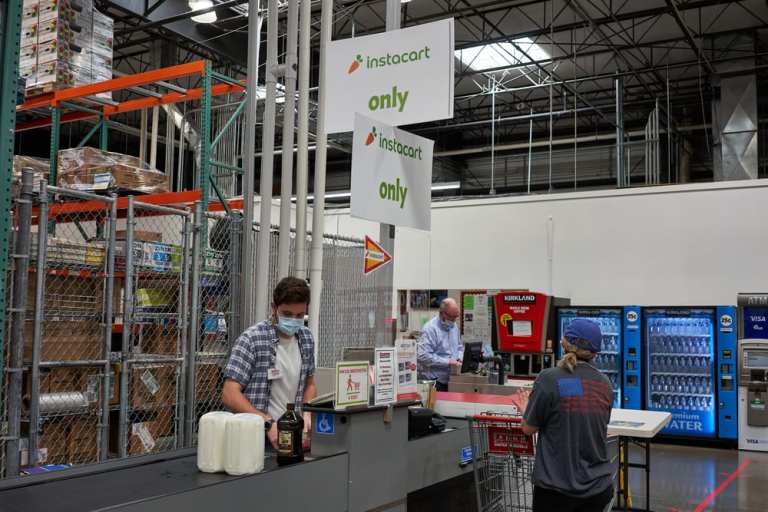
Some accounts say Roman soldiers were periodically paid for their labors in salt, and while compensation methods have evolved considerably since then, the concept of lump periodic payments has endured.
Numerous economic, social and technological trends are rendering this system more outdated, however. Consumers have come to expect on-demand service when they watch movies, make online purchases or hail rides, for example, but this practice contrasts with how most employees are paid. Workers typically wait two weeks or longer to receive their wages, which can be especially stressful for the nearly 60 percent of Americans living paycheck to paycheck.
Various compensation alternatives have recently emerged that are more aligned with workers’ on-demand expectations. Digital tools like pay cards and apps allow workers to receive earned wages the same day they request them. Interest in more flexible compensation methods was growing before the pandemic, and related economic shifts are likely to accelerate this trend as businesses seek to motivate employees as well as attract new talent.
On-Demand Pay And The Gig Economy
On-demand payment options are most prevalent among gig economy platforms known for offering on-demand services, including ridesharing and meal and grocery delivery. Ridesharing services Uber and Lyft were early pioneers in allowing drivers to instantly request their earnings, and such offerings have proven popular with workers on these platforms. This is especially true of Lyft, as more than half of its drivers reportedly use its daily payout option.
The pandemic-related economic fallout has hit the gig economy hard, but technology-oriented platforms have also demonstrated that they can adapt to rapid economic shifts. Instacart offers a compelling case study, as it has come to dominate the third-party grocery delivery market over the course of the pandemic partly because it brought online ordering to brick-and-mortar supermarkets that previously had limited capabilities. Instacart hired an estimated 500,000 “shoppers” amid the mass furloughs and layoffs many companies faced this spring, and it has offered on-demand payment options since 2019 to meet its gig workers’ demands.
On-demand pay appeals to gig workers for numerous reasons. Many have tight finances and often pay for their own supplies and equipment, including vehicles. PYMNTS research shows that those who are interested in receiving immediate or advanced payments most commonly cite two main benefits: reducing financial stress and being able to pay their bills. These options are so compelling that 85 percent of gig workers would work more often if they were paid faster, and 51.8 percent would be interested in switching to gig platforms that enabled them to receive pay advances. Such benefits would likely extend to employers, too, as those who receive on-demand payment options report being more motivated and less stressed.
The Flexible Pay Imperative And On-Staff Workers
On-demand payment options are less prevalent among companies with more traditional workforces than gig platforms. One reason could be that tax withholding rules and other regulations can make early payouts more difficult to manage for hourly or salaried workers — those classified in the U.S. as W-2 employees.
These types of services are making inroads among employers with more conventional employment models, however. McDonald’s and Outback Steakhouse began offering day-of payouts to employees two years ago, for example, and Walmart — the largest private employer in the U.S. — introduced a service that allows employees receive early payments through a specialized app twice per quarter, or more frequently if they pay small fees.
On-demand payment options could be gaining traction beyond the gig economy because companies are recognizing that they must compete for effective and motivated workers, regardless of their tax classifications. A growing number of workers have come to expect payment options that keep pace with their needs and lifestyles. More than 400,000 Walmart employees use its early payment service — a significant number that is still less than half of its 1.5 million workers. This underscores that rather than serving as a call to discard traditional payroll practices, offering on-demand payment options can help employers provide flexible and agile systems that accommodate various employees’ expectations and circumstances.
This flexibility could also extend to off-cycle payments, such as those resulting from errors in previous payments, dismissals and compensation for special expenses. Issuing checks in these circumstances proved challenging before the pandemic, but the economy’s current realities can pose numerous additional complications that affect everything from cash flows to account reconciliations. A former worker may fail to provide a current mailing address, for example, and those with limited banking access could also find it more difficult to cash checks. Many companies’ shifting reopening plans might require them to rapidly scale up operations and hire temporary contractors, and the pandemic’s changing nature could also necessitate layoffs and furloughs.
A multitude of firms recognize the need to ditch paper-based legacy payroll processes and adopt more flexible digital systems, and their employees have expressed interest in these options. More than 90 percent of workers expect to be paid with pay cards, digital platforms or mobile wallets within 10 years, according to a recent ADP report.
A growing share of commerce is migrating to digital channels, giving firms an opportunity to adjust their compensation methods to better align with consumers’ expectations. The current business climate also poses risks, however. Employers facing the new economic reality may discover too late that legacy payment methods are ill-suited to attracting and retaining talent.